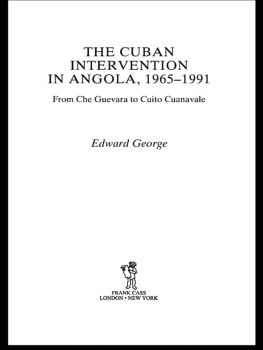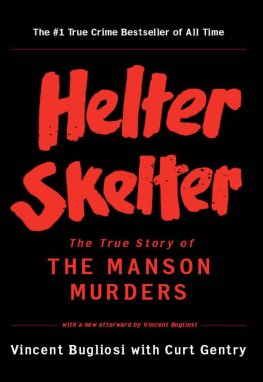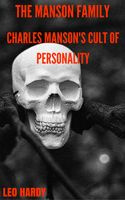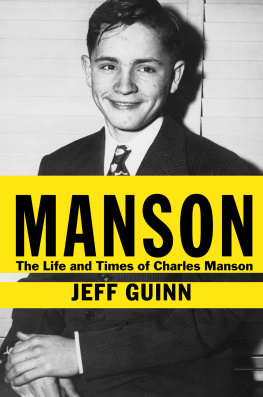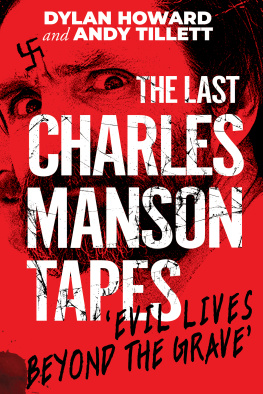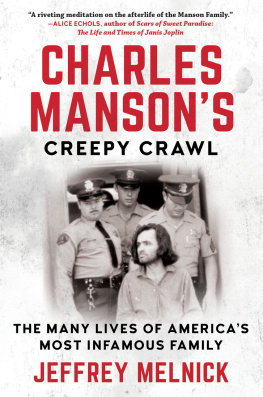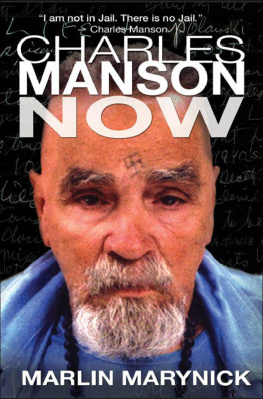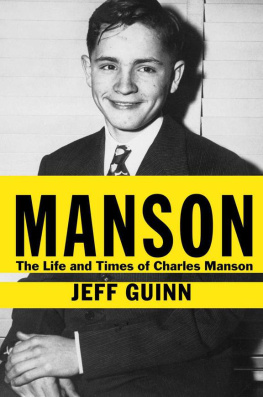PRAISE FOR THE ORIGINAL EDITION, TAMING THE BEAST:
A valuable book which gives additional insights into the criminal mind of Charles Hanson.
VINCENT BUGLIOSI, author of Helter Skelter
Charles Manson may be the most written about, commercially viable malefactor in American history, yet George and Matera offer a worthwhile new take on him in their jailhouse bio . George came to know Mansons whole rollicking gang in scary and intimate detail. He strives to understand Manson and his devotees and, spewing psychological and spiritual insights and plenty of witchy Masonoid details, succeeds in horrifying his readers.
Booklist
What distinguishes Georges book is that it puts a human face on a man whose very name defines evilrevealing the personality hidden during television interviews.
Alameda Journal
An ugly, ugly look at a man whose entire life has been a study in sickness . Provide[s] a chilling glimpse of Family members like Lynette Squeaky Fromme, who showed up at the prison regularly in her red cape.
Kirkus Reviews
This anecdotal account by his jailer confirms that Manson remains without remorse, unstable, frightening, and unlikely to ever be paroled . George seems to have been truly shaken by his dealings with Manson.
Library Journal
Manson continues his reign as Americas leading celebrity carnivore.
Phoenix Arizona Republic
A helter skelter odyssey that takes readers into the heart of convicted murderer Charles Mansons bizarre world . Its also a fascinating look at the California state prisons system.
Vacaville Reporter
Who was Manson?, George wondered. After all, who could be so cold, so much without soul? Figuring out Manson became almost an obsession for George . At one point, he began meeting daily with Manson in his cell to try to understand this demon, or at least, what he first believed was a man with an indefensible demonic bent.
Portland Maine Sunday Telegram

STERLING and the distinctive Sterling logo are registered trademarks of Sterling Publishing Co., Inc.
1998, 2020 Edward George and Dary Matera
Cover 2020 Sterling Publishing Co., Inc.
All rights reserved. No part of this publication may be reproduced, stored in a retrieval system, or transmitted in any form or by any means (including electronic, mechanical, photocopying, recording, or otherwise) without prior written permission from the publisher.
All trademarks are the property of their respective owners, are used for editorial purposes only, and the publisher makes no claim of ownership and shall acquire no right, title or interest in such trademarks by virtue of this publication.
Originally published in 1999 by St. Martins Griffin
as Taming the Beast: Charles Mansons Life Behind Bars
This updated Sterling edition published in 2020
ISBN 978-1-4549-4087-6
For information about custom editions, special sales, and premium and corporate purchases, please contact Sterling Special Sales at 800-805-5489 or .
sterlingpublishing.com
Cover design by David Ter-Avanesyan
Interior design by Gavin C. Motnyk and Sharon Jacobs
Picture CreditsSee
AUTHORS NOTE
The conversations throughout the book, including my conversations with Charles Manson, have been reconstructed from my recollection and, in some instances, from notes made immediately after those conversations.
Ed George
CONTENTS
PUBLISHERS NOTE
THIS RIVETING ACCOUNT of prison administrator Ed Georges experiences with Charles Manson over many years was originally published in 1998. For this new edition, some facts have been updated, some language has been slightly modernized or changed tense where appropriate, and some longer interviews and parole testimony have been abridged.
INTRODUCTION
My father is the jailhouse. My father is your system . I have done my best to get along in your world and now you want to kill me, and I look at you and I look how incompetent you all are, and then I say to myself, you want to kill me? Ha, Im already dead! Have been all my life!
CHARLES MANSON , FROM HIS TRIAL TESTIMONY , 1970
WHEN I WAS A SMALL BOY , the highlight of the week was a Sunday-afternoon walk with my father. We lived in the geographical center of San Francisco near a hill that people called Mount Olympus. The name was not a tribute to the mythological home of the gods. It was a politically incorrect joke on the local milkman. The guy had a bad leg and was known as Old Limpy. He dragged that leg up the hill so many times everyone began referring to it as Mount Olympus.
My dad and I used to spend many wonderful hours hiking the winding road to the top. There was a magnificent statue set high on a pedestal overlooking the city and the Pacific Ocean. The statue held a torch high over her head in one hand, and a sword ready to strike in the other. It was a riveting piece of art that never failed to captivate me, no matter how many times I saw it.
Do you know what it means? my father asked.
No, Dad, what?
Its the statue of light. She carries the torch of truth over her head. The sword is there to protect the torch from those who want to put it out.
Six years later, after the Japanese attacked Pearl Harbor, my father was called into the service. He and other soldiers set up a lookout post on Mount Olympus, scanning the coast for enemy ships and submarines. I was ten then, and used to go up there with him. We spent long hours together looking into the ocean on the night watch. The whole city was blacked out, and the view was glorious. When I couldnt keep my eyes open anymore, Id curl up at the foot of the statue, braced from the whistling wind, and fall asleep. Those were the best of times.
My father was eventually transferred to the battle front overseas and never returned home. No, he didnt die, but he might as well have, as far as a young boy was concerned. He met another woman in a foreign land, divorced my mother, remarried, and moved away. I was devastated.
For years afterward, for decades, I returned to that hill, remembered my father, and fed a pain that wouldnt go away. When I came home from college a grown man, my car mysteriously headed for the old statue. I married and became a father myself, six times over, and still kept coming back. Finally, I arrived one foggy day to find the statue gone. It stunned me, depressing me further, but did nothing to stop my lemming-like treks. Year after year I came, staring up at the empty pedestal, trying to heal a wound that would never stop hurting.


